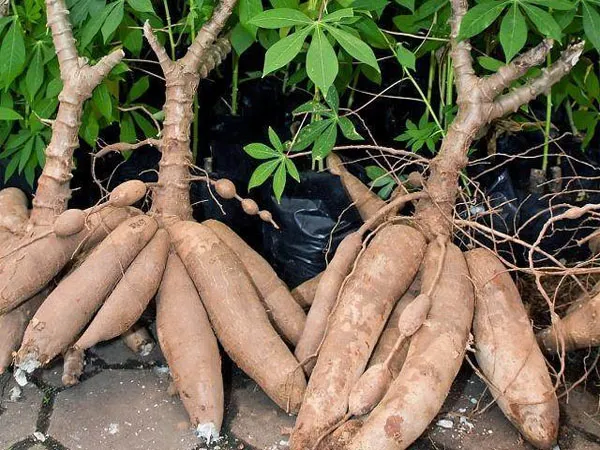Farmers and traders in Omoro District are grappling with severe shortages of fresh cassava, a situation caused by persistent cassava diseases that have plagued the region since 2016. The diseases, including cassava mosaic virus, attack the crop at early growth stages, causing roots to rot, leaves to turn yellow, and stems to blacken. Affected cassava can rot within two weeks, leading to substantial losses for both farmers and households.
Markets in Omoro are now relying on cassava transported from other districts, including Nwoya and Oyam. Prices have surged: a bag of fresh cassava now sells for UGX 130,000, up from UGX 70,000; a kilogram of dry cassava costs UGX 1,200, up from UGX 700; and a kilogram of cassava flour sells at UGX 2,000, doubling from UGX 1,000.
Stella Anyango, a vendor at Acet Town Council, said the shortages have increased her transportation costs and reduced profits. “I travel to Otwal in Oyam District to buy a sack of cassava at UGX 100,000, spending UGX 70,000 on transport. I may make a profit of only UGX 30,000 per sack,” she said. Anyango added that much of the cassava she sells is already affected by disease, forcing her to select only the best for sale.
Aloyojok Gloria, a vendor at Lalogi Market, said that for over five years she earned a good income from cassava sales, but the current shortage has forced her to spend more on transportation while farmers keep most of their produce for home consumption. “These challenges are caused by cassava diseases forcing farmers to sell early, fearing total loss,” she said.
Farmers themselves report devastating losses. Agines Lilly Aciro from Akidi Sub-County said her four-acre cassava plantation was destroyed this year despite following extension workers’ advice on crop rotation and other preventive measures. “I was expecting to sell my cassava in June, but now I have nothing to sell,” she said. Aciro called on the government to provide disease-resistant cassava varieties and recommended pesticides, noting that farmers have faced these challenges without support since 2016.
Okumu Ivan from Labora Sub-County warned that the shortage is threatening food security. “Families are relying on maize flour, which does not last as long as cassava. I had to plant half an acre of potatoes as a backup,” he said, adding that even the new cassava he planted shows early signs of disease.
Godfrey Jomo Andrew Oyet, the Production Officer for Omoro District, advised farmers to practice crop rotation and plant disease-resistant varieties such as NARO’s “Naro Cache One,” which is both disease- and drought-resistant. He explained that planting the same local cassava variety repeatedly increases the lifecycle of the disease and makes crops more vulnerable.
***URN***

